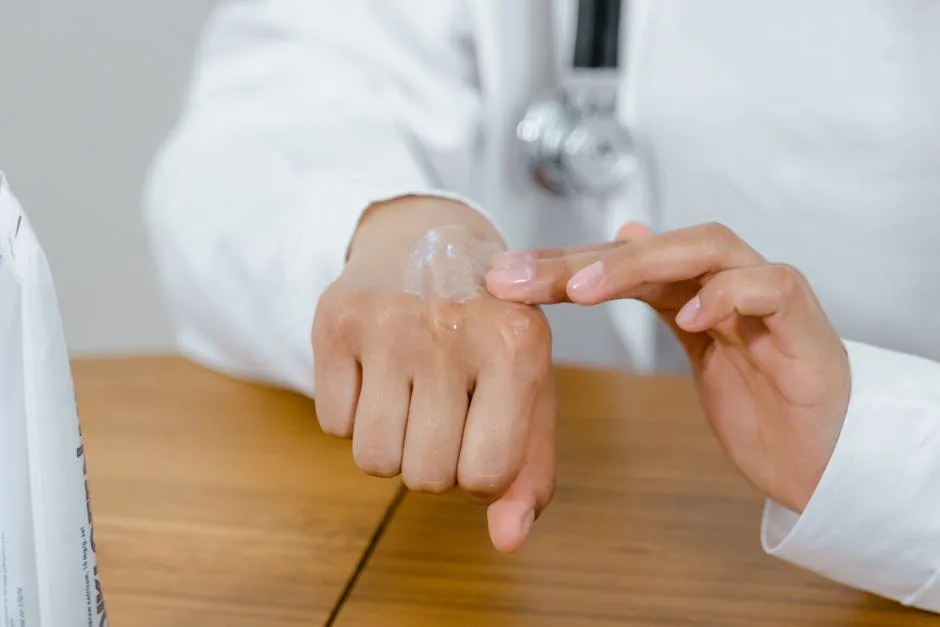Introduction
Match statistics play a crucial role in the medical residency application process. These numbers aren’t just digits; they provide valuable insights for applicants, residency programs, and educational institutions. For applicants, understanding match statistics can illuminate trends in specialty competitiveness, placement rates, and overall success in matching. Programs can gauge their effectiveness in attracting candidates and improving their offerings based on statistical performance. This article aims to deliver a detailed overview of match statistics for 2024. We will discuss emerging trends, comparisons with previous years, and insights gleaned from this year’s results. By analyzing these statistics, we hope to equip prospective applicants with the knowledge needed to navigate the often bewildering world of residency applications. If you’re looking for a solid foundation in this journey, consider picking up Match Statistics for Medical Residency: A Comprehensive Guide. It’s the perfect companion for anyone looking to understand the ins and outs of the match process. To provide this comprehensive overview, we will draw on various reports and data sources, including the National Resident Matching Program (NRMP), the Association of Psychology Postdoctoral and Internship Centers (APPIC), and other relevant studies. These reports contain statistical tables, graphs, and analysis of the positions offered and filled by state and program, ensuring we present a full picture of the 2024 match landscape.
Understanding Match Statistics
What Are Match Statistics?
Match statistics refer to the quantitative data collected during the residency matching process. They indicate how many applicants successfully secured positions in residency programs. These statistics are paramount for both applicants and programs during the matching season. If you’re eager to dive deeper into this topic, the book The Residency Match: A Guide for Medical Students is an excellent resource that provides insights on how to navigate the application process effectively. Different types of match statistics are available. Placement rates reflect how many applicants matched to their preferred specialties or programs. Another critical metric is the comparison of positions offered versus positions filled. A program offering 30 positions but only filling 25 may indicate a mismatch between what the program offers and what applicants seek. These statistics help applicants strategize their applications effectively. Understanding the competitive landscape can inform decisions about which programs to apply to and which specialties to pursue. For residency programs, these statistics are essential for evaluating recruitment strategies and program effectiveness, ensuring they attract the best candidates. For those looking to enhance their understanding, the book The Complete Guide to Medical Residency Applications can be invaluable. Overall, match statistics serve as a guiding compass for applicants and programs alike, helping them navigate the complex matching process. With the 2024 data, we’ll uncover trends and insights that can shape future applications and program offerings. This understanding is crucial for anyone looking to make informed decisions in their medical careers.
Importance of Match Statistics in 2024
Match statistics are more than just numbers; they are strategic tools for applicants and residency programs alike. For applicants, these statistics serve as a guiding star, illuminating the path toward successful applications. By analyzing match statistics, applicants can identify which specialties are the most competitive. This knowledge helps them tailor their applications to match their strengths and interests. If you’re serious about acing your residency applications, consider reading The Match: A Guide to the Medical Residency Application Process. Understanding match rates can also inform decisions on where to apply. If a specialty has historically low match rates, applicants might reconsider their strategy. They can focus on building their profiles or applying to less competitive specialties. This strategic approach can boost their chances of matching successfully. Residency programs, on the other hand, benefit from match statistics by evaluating their recruitment processes. They can assess whether they are attracting the right candidates. Programs can analyze their match rates and compare these figures with previous years. This allows them to refine their offerings and improve their visibility to potential applicants. For those looking for a comprehensive resource on this topic, The Medical Residency Interview: A Comprehensive Guide is a great choice. For instance, if a program sees a drop in match rates, it might indicate that changes are needed. Perhaps they need to enhance their curriculum or increase outreach efforts. Programs can also see which specialties are gaining or losing popularity among applicants. This insight helps them adjust their recruitment strategies accordingly. In essence, match statistics are critical for both applicants and programs in 2024. They provide valuable data to strategize applications and refine recruitment efforts. The interplay of these statistics fosters a more efficient matching process, benefiting all parties involved.
Key Match Statistics for 2024
Overview of 2024 Match Results
The 2024 Main Residency Match has revealed some compelling figures. Total applicants reached an impressive 45,000, while the number of available positions stood at 38,000. This year, the overall match rate was approximately 84%, a slight increase compared to last year’s 82%. To make sense of these statistics, you might want to check out Medical Residency Survival Kit, which offers practical tips for navigating this competitive landscape. When we dig deeper, interesting trends emerge. The 2023 match saw around 44,500 applicants and 37,000 positions, resulting in an 82% match rate. The steady rise in both applicants and match rates indicates a healthy interest in residency programs. These numbers suggest that the residency landscape is becoming more competitive. With more applicants vying for limited positions, aspiring doctors must remain strategic. Understanding these statistics can help applicants navigate this rising competition.
Breakdown by Specialty
Not all specialties are created equal when it comes to competitiveness. Some specialties have significantly lower match rates, indicating fierce competition. For instance, dermatology and plastic surgery consistently rank among the most competitive fields, with match rates hovering around 60%. If you’re aiming for these specialties, consider reading How to Ace Your Medical Residency Interview to prepare effectively. Factors contributing to this competitiveness include prestige, lifestyle, and salary expectations. Applicants often flock to these specialties due to the perceived advantages they offer. As a result, they face intense competition, making it crucial for them to strengthen their applications. In contrast, specialties like family medicine and psychiatry tend to have higher match rates, often exceeding 90%. These fields are crucial for the healthcare system, attracting candidates who are dedicated to patient care.Overall, understanding the competitive landscape of specialties is essential for applicants. By knowing which fields are the most competitive, they can make informed choices about where to apply. This strategic insight can help them maximize their chances of matching and advancing their medical careers.Understanding the importance of family medicine statistics can help applicants make informed choices. family medicine shelf statistics
Trends and Insights from 2024
Trends in Specialty Preferences
The 2024 match statistics reveal fascinating shifts in specialty preferences among applicants. Over the past few years, we’ve witnessed a clear trend toward primary care specialties. Family medicine and internal medicine have seen a surge in popularity, likely driven by the growing awareness of the importance of accessible healthcare. If you’re keen to explore the ins and outs of this trend, consider reading The Successful Match: A Guide for Medical Residency. In contrast, some traditionally sought-after specialties are experiencing a decline in applicants. Dermatology and plastic surgery, once the elite picks, are becoming less favorable for new graduates. The pressure of intense competition, coupled with escalating educational debt, has pushed candidates to reconsider their choices. The allure of a stable work-life balance is becoming a deciding factor for many. Interestingly, surgical specialties remain a mixed bag. While general surgery has maintained its appeal, subspecialties like vascular and cardiothoracic surgery are witnessing fluctuating interest. This might stem from the demanding nature of these fields, where long hours and rigorous training deter some applicants. Another crucial trend is the increased representation of international medical graduates (IMGs) in various specialties. As US medical schools expand, IMGs are stepping up to fill gaps in specialties with fewer domestic applicants. This diversification enriches the match process and ensures a more comprehensive approach to patient care. Finally, the rise of telemedicine has made specialties like psychiatry more attractive. The integration of technology allows for flexible work environments, appealing to a younger generation of medical professionals who value adaptability in their careers. If you’re interested in this evolving field, the book Medical Terminology: A Short Course can offer foundational knowledge.
Match Results by State and Program
State-by-State Analysis
The 2024 match results also highlight intriguing variations by state. In California, a whopping 85% of positions were filled, reflecting its status as a prime destination for medical training. Conversely, states like Wyoming and North Dakota struggled, with fill rates around 70%. The geographic distribution of residency programs plays a significant role in these statistics. States with a higher concentration of medical schools and residency programs naturally attract more applicants. If you want to understand how to navigate these trends, The Medical Residency Interview Handbook is an excellent read. When it comes to positions offered, Texas leads the pack, boasting over 5,000 available spots. This abundance means greater competition, but it also means opportunities abound for aspiring residents. However, some states offer fewer positions, creating a tighter race among candidates.
Program-Specific Results
Examining program-specific results, prestigious institutions like Johns Hopkins and Massachusetts General Hospital continue to attract top talent. Their match rates remain consistently high, often exceeding 95%. This reflects their rigorous selection processes and established reputations. For those aiming for success in these competitive environments, consider the The Match: A Step-by-Step Guide for Medical Students. In contrast, lesser-known programs are beginning to see shifts in their performance. Some have improved their match rates significantly. This improvement can be attributed to enhanced training offerings and focused outreach efforts aimed at attracting diverse candidates. Moreover, the 2024 data show that certain specialties within programs are experiencing notable changes. For example, psychiatry programs have reported increased interest. This surge may be linked to the growing awareness surrounding mental health and the importance of psychological care in modern medicine. Overall, the landscape of match results by state and program is evolving. As applicants continue to navigate their choices, understanding these trends will help them align their applications with their career aspirations. The 2024 match cycle demonstrates a dynamic interplay between personal preferences, geographic factors, and program strengths, paving the way for future changes in the residency landscape.
Impact of COVID-19
The pandemic left an indelible mark on match statistics and applicant behavior. Many applicants faced disruptions, leading to unique challenges. Virtual interviews became the norm, allowing for wider geographical reach but also increasing competition. Anxiety levels soared, with many applicants feeling uncertain about their chances. Some opted for specialties less affected by the pandemic, shifting preferences in the overall match landscape. For those interested in understanding the nuances of medical school admissions, The Complete Guide to Medical School Admissions is a fantastic resource. Moreover, the shift towards telemedicine made certain fields more appealing. Psychiatry, for example, gained traction as applicants sought specialties that embraced technology and flexibility. The long-term effects of COVID-19 are still unraveling, but its impact on applicant decisions is undeniable.
Factors Influencing Match Outcomes
Rank Order Lists
The average length of rank order lists has steadily increased in recent years. In 2024, applicants submitted an average of 15 choices, up from 13 the previous year. This trend suggests that candidates are casting a wider net to secure a match. If you’re looking for a comprehensive guide on creating effective rank order lists, Medical School Secrets can help. Research shows that longer rank order lists correlate with higher match success rates. Candidates with extensive lists are more likely to find programs that fit their profiles. However, spreading oneself too thin can backfire. It’s crucial to balance quality and quantity when curating these lists.
Applicant Characteristics
Various applicant characteristics significantly influence match outcomes. MD versus DO candidates often see different success rates in certain specialties. MDs tend to dominate competitive fields like surgery, while DOs often excel in primary care roles. If you’re curious about the differences in training and outcomes, the book Medical Student’s Guide to the Residency Match is a must-read. International medical graduates (IMGs) face unique challenges too. While IMGs have increased their presence in specialties like internal medicine, they still struggle in competitive fields. The match rates of US medical graduates (USMGs) compared to IMGs reveal a stark contrast in opportunities, particularly in sought-after specialties. Understanding these dynamics allows applicants to tailor their strategies. Recognizing where one fits within these categories can make a substantial difference in match success.
Future Predictions
Based on the insights from the 2024 data, several trends are likely to shape future match statistics. The increasing interest in primary care specialties is expected to continue. As healthcare evolves, more applicants will prioritize work-life balance and job stability over prestige. If you’re looking to navigate these changes, the book Medical School: A Survival Guide offers essential tips. The rise of telemedicine will further influence specialty popularity. Fields that integrate technology seamlessly will likely attract more candidates. Expect to see a continued influx of IMGs, especially in areas facing physician shortages. The ongoing evolution of residency programs will also impact match outcomes. Programs that adapt to the changing landscape will attract top talent. Institutions focusing on diversity and inclusion will likely see improved match rates as they reach a broader range of applicants. In summary, anticipating these trends can help future applicants navigate the match process more strategically. The 2024 data sheds light on the shifting dynamics, enabling candidates to make informed decisions.
Unsuccessful Matching Experiences
Not every applicant finds success in the matching process. Many face hurdles that can derail their hopes. Let’s look at a few examples that illustrate common pitfalls. If you’re looking for guidance, the resource Medical Residency Handbook is a great starting point. Take Sarah, a bright candidate with stellar grades. She applied to competitive specialties but didn’t secure a match. Why? Her application lacked clinical experience in her chosen field. Programs often seek hands-on exposure, and without it, even top grades may not suffice. Then there’s Tom. He submitted a rank order list filled with only high-profile programs. While ambition is commendable, he didn’t include any less competitive options. When the dust settled, he was left unmatched. His experience shows that a balanced approach is key. Another case involves Jessica, an international medical graduate. She faced challenges navigating the nuances of the application process. Despite a robust academic background, she struggled with interview skills. Many IMGs encounter similar issues, highlighting the need for targeted preparation. If you’re in a similar situation, consider using a resource like The Medical School Interview: A Comprehensive Guide to sharpen your skills. These examples underscore critical factors in the matching process, including experience, strategy, and preparation. Each unsuccessful match tells a story, offering lessons for future applicants. Understanding these challenges can guide aspiring residents toward a more successful path in the future.
Conclusion
In reviewing the match statistics for 2024, several key findings emerge. This year saw a total of 45,000 applicants competing for 38,000 available positions, resulting in an overall match rate of approximately 84%. This represents a slight increase from the previous year’s 82%, indicating a rising interest in residency programs. Primary care specialties like family medicine and internal medicine are gaining popularity, while traditionally coveted fields such as dermatology are seeing fluctuating interest. If you’re keen on understanding these trends, the book Match Statistics: A Comprehensive Overview can provide valuable insights.Moreover, applicants should note the importance of crafting a well-rounded rank order list. Those who spread their options across a mix of competitive and less competitive programs tend to have better outcomes. Additionally, the increasing representation of international medical graduates sheds light on the evolving landscape of residency applications. Finally, these statistics emphasize the critical role of data in the residency application process. For future applicants, understanding trends in match statistics can inform their choices, helping them to strategize effectively. Residency programs can also utilize this data to refine their recruitment efforts, ensuring they attract the best candidates. The insights from 2024 are not just numbers; they’re a roadmap for applicants navigating their medical careers. As the landscape continues to change, staying informed will be paramount for success. If you’re looking for a practical guide, Medical Residency: A Comprehensive Guide is an excellent resource to consider.For insights on match statistics trends, applicants can refer to resources on ashp match statistics.

FAQs
What are the main factors that influence match rates?
Several factors impact match rates significantly. First, applicant qualifications play a crucial role. Those with strong academic records, clinical experience, and research involvement tend to have higher match rates. Program competitiveness is another influencing factor. Some residency programs are notoriously difficult to get into, often leading to lower match rates in those specialties. Additionally, the demand for specific specialties can affect match outcomes. Fields with a higher need for physicians, such as primary care, often have better match rates compared to more saturated specialties.
How can applicants improve their chances of matching?
Improving match chances involves a strategic approach. First, applicants should focus on gaining relevant clinical experience in their desired specialty. This hands-on exposure makes applications more compelling. Next, crafting a balanced rank order list is essential. Include a mix of competitive and less competitive programs to maximize matching opportunities. Networking can also help. Reaching out to mentors and attending conferences provides insights and connections that may lead to better outcomes. Lastly, practicing interview skills cannot be overlooked. Being well-prepared for interviews enhances confidence and performance, making a strong impression on program directors.
Where can I find more detailed match statistics for specific programs?
For detailed match statistics, several resources are available. The National Resident Matching Program (NRMP) provides comprehensive data on match results by state, specialty, and applicant type. Their official website, [nrmp.org](https://www.nrmp.org/match-data/), includes various reports and data resources. Additionally, the Association of Psychology Postdoctoral and Internship Centers (APPIC) offers statistics relevant to psychology internships, accessible via their website at [appic.org](https://www.appic.org/Internships/Match/Match-Statistics). For those looking for historical data, the AAMC also compiles extensive statistics on residency applications and matches, which can be found at [aamc.org](https://www.aamc.org/data-reports/data/eras-statistics-data).
Please let us know what you think about our content by leaving a comment down below!
Thank you for reading till here 🙂
All images from Pexels




